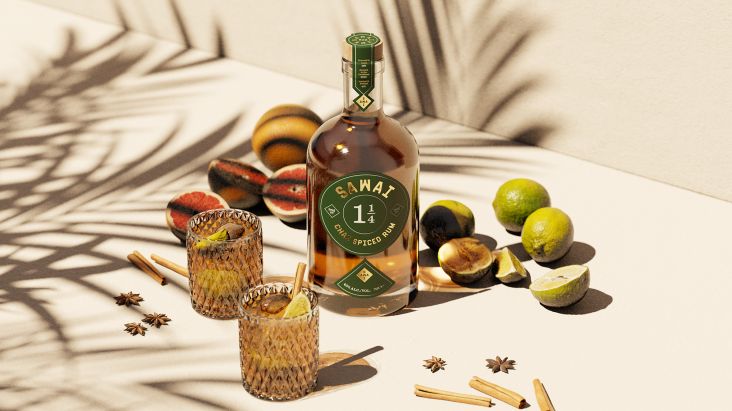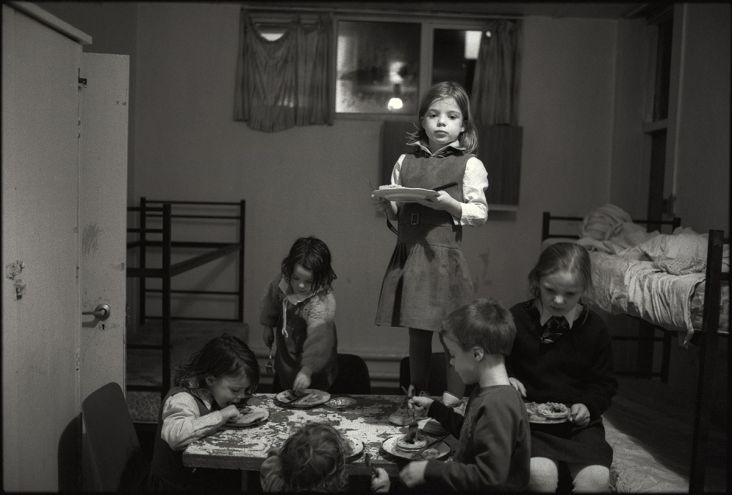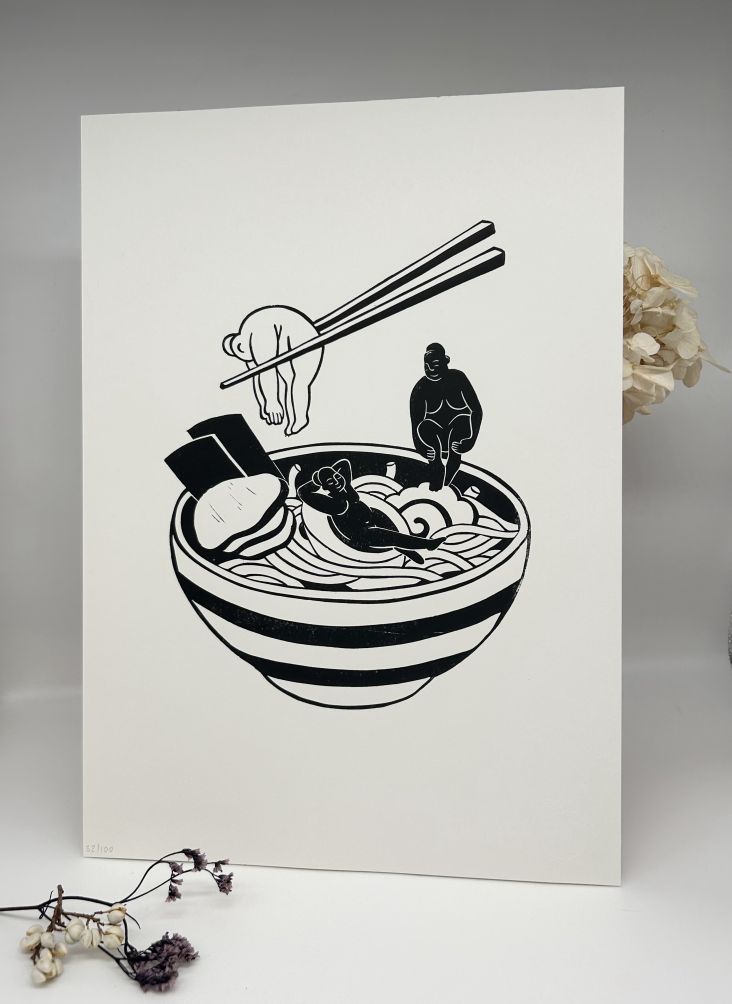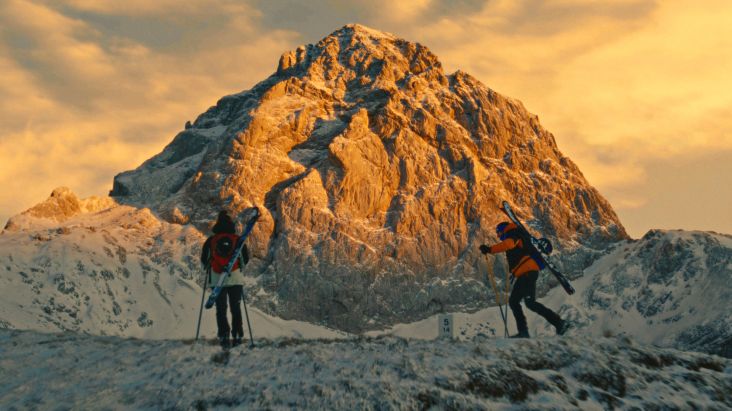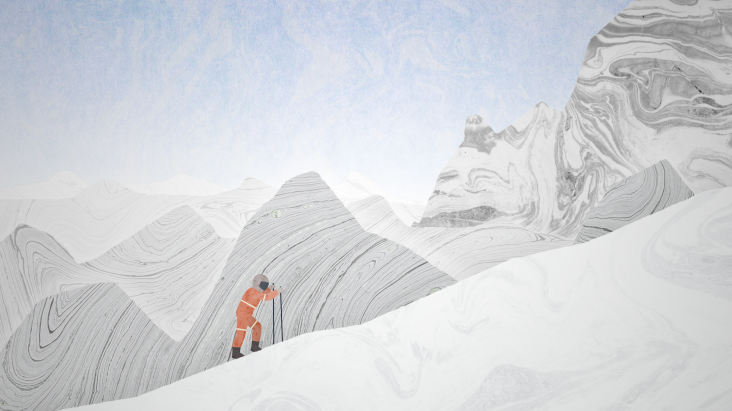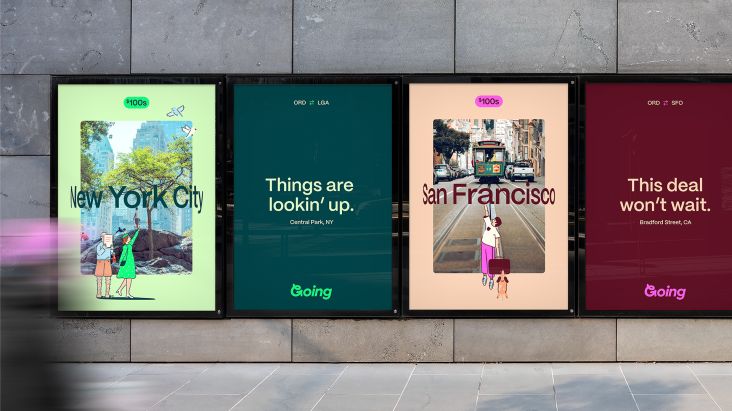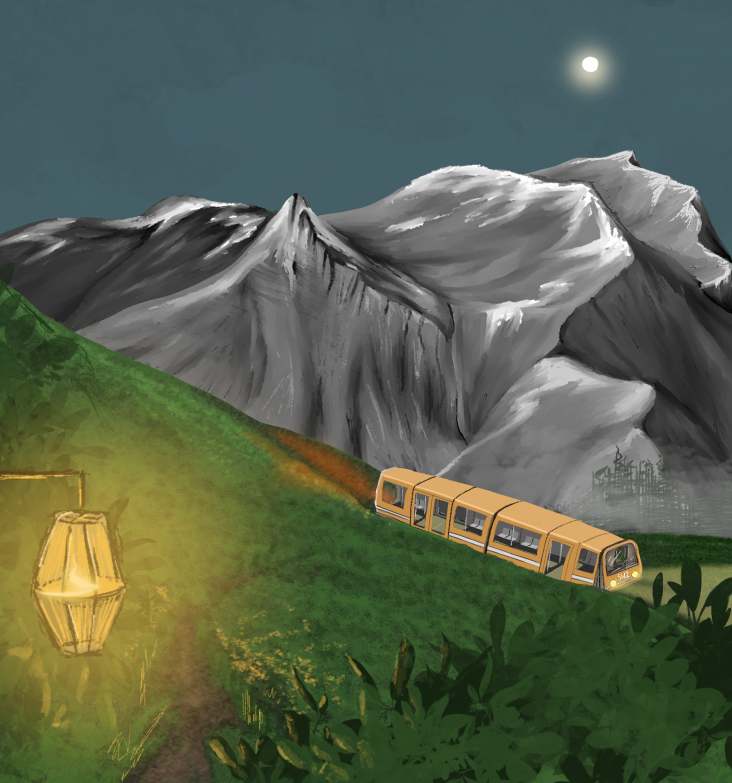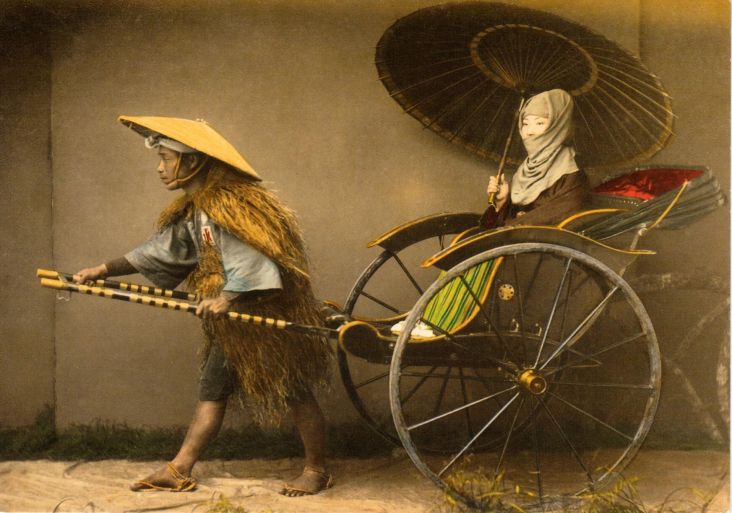Kevin Chin explores hybrid notions of space in his massive, meticulous paintings
We talk to Melbourne-based artist Kevin Chin about his gigantic, "gently disorienting" paintings which express his confusion and concerns about the current state of the world.
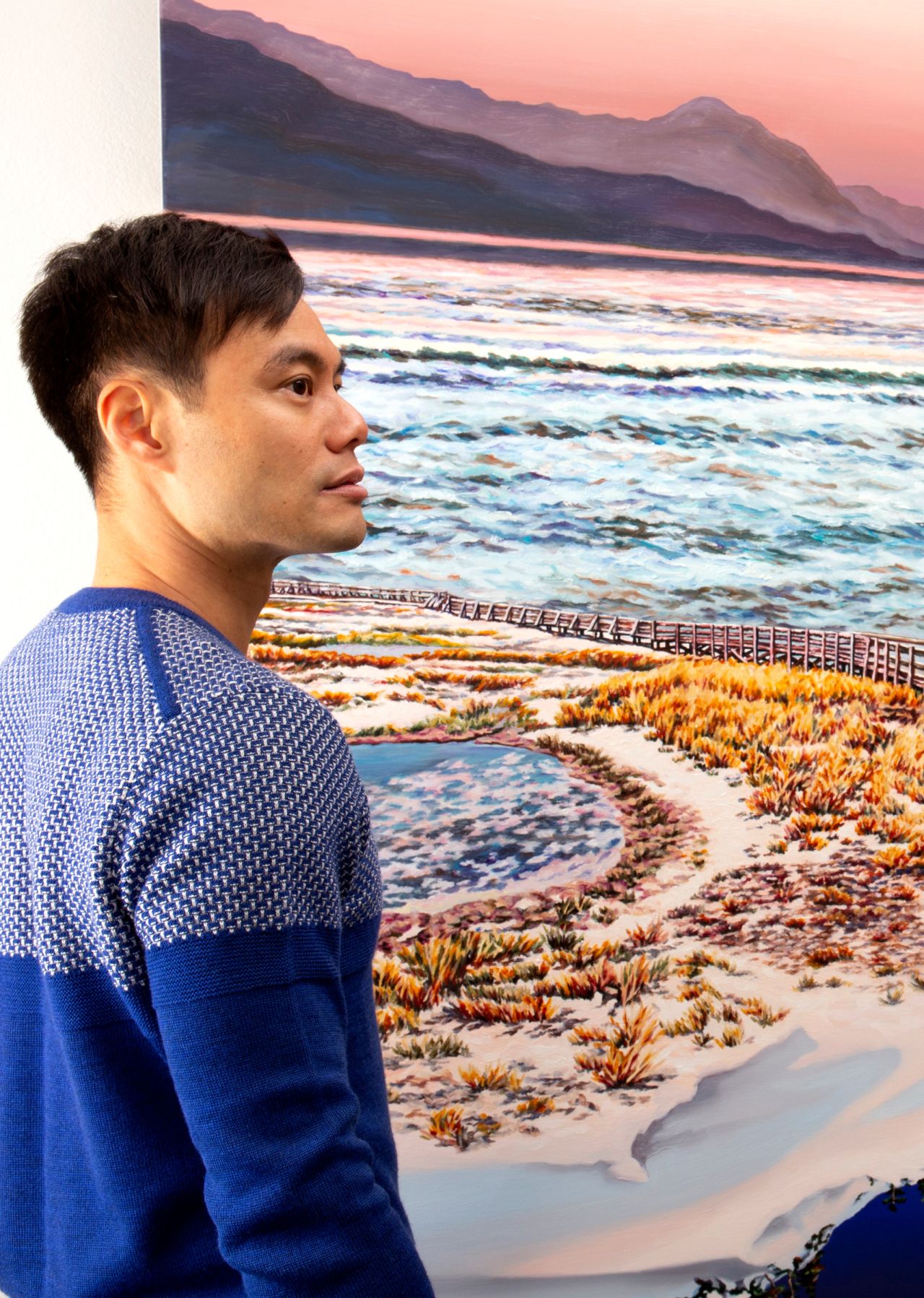
Kevin Chin
Kevin Chin is well-placed when it comes to exploring themes of place and belonging. Born in Australia, Kevin is a graduate of the Victorian College of Arts whose career as an artist has seen him exhibit all over the country and further afield, with galleries in Japan, Singapore and the USA awarding him solo exhibitions. Not to mention the year he spent working at London's White Cube after university.
His work, which takes the shape of humongous, meticulously-planned paintings, primarily concerns how a sense of place can cross borders. Travelling the world helps Kevin generate ideas for his art, but he also takes inspiration from current events and things happening in his journeys. This includes the recent lockdown restrictions and remote working models, which have become the new normal.
Fresh from his latest solo exhibition, This Is No Fantasy, which saw Kevin depict the world turned upside down in a series of large-scale oil paintings, we caught up with him to learn more about his creative approach, why it can take him up to eight years to create a piece of art, and how he builds up his stunning glazes of shimmering colours.
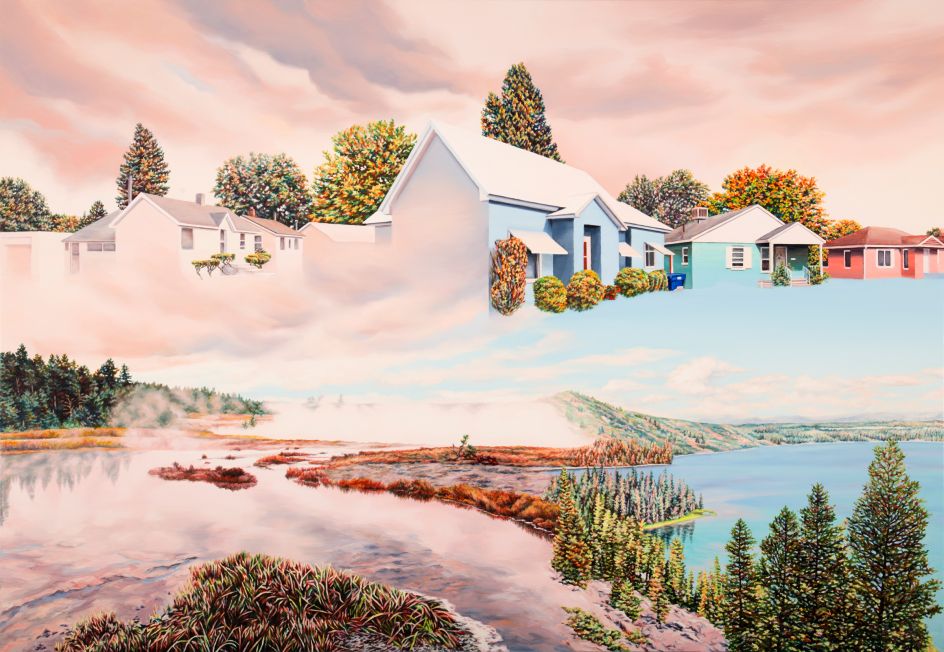
© Kevin Chin
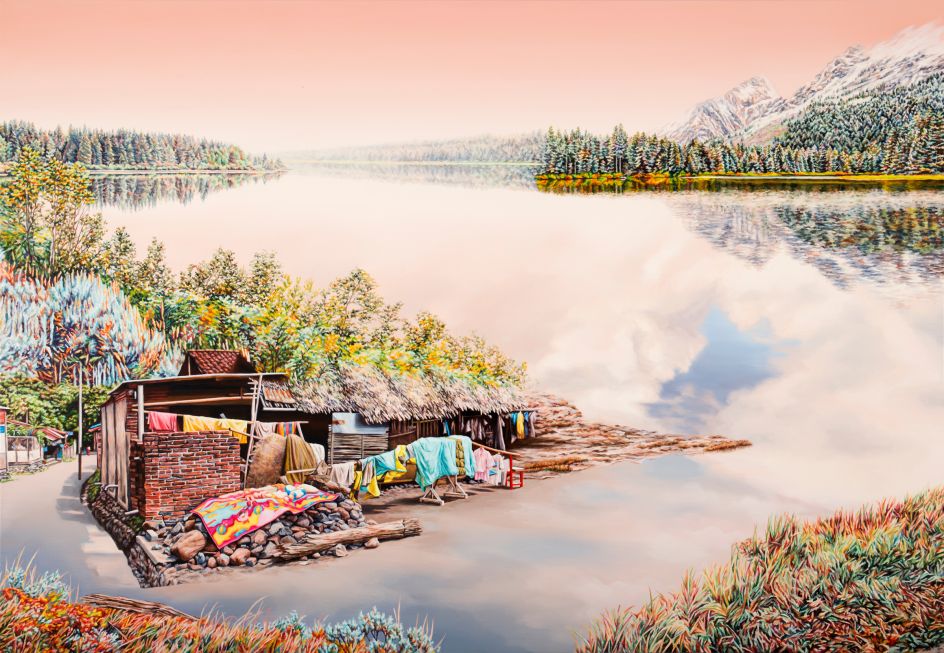
© Kevin Chin
You're based in Melbourne. How has this area inspired your work?
The 2021 Census found that nearly half of Australians have a parent born overseas (including myself). Living in a colonised country, where the Indigenous population never ceded sovereignty, also makes you aware of how land rights and belonging are constantly contested. Furthermore, Australians are big travellers. So many of us have connections with all different parts of the world for many reasons. Growing up here has informed my interest in exploring more fluid ways of creating a sense of belonging.
Melbourne is also a wonderfully supportive place to be an artist, with a terrific community. For my last solo exhibition here, I was awarded grants from Creative Victoria and the Australia Council, our state and federal arts funding bodies.
How has your art evolved, and what has prompted these changes?
While I've always incorporated paintings at art school (almost 20 years ago!) I actually worked across forms to create installations examining the meaning between art objects. I was interested in phenomenology and semiotic theory.
I've carried this same approach across to my paintings; it's just that now I'm testing the meaning between painted figurative elements and unpacking their cultural loading. Instead of juxtaposing things within an installation space, I'm assembling images within the canvas space. That's probably also how I ended up making such huge paintings! They're generally about two metres wide or larger multi-panels.
One thing that's been constant has been this interest in how you make sense of home for yourself – though it's something I've explored from different angles along the way. At the moment, I'm thinking about how we can break down conventional ideas around nationalism and how home extends beyond geography.
When I went back to art school in 2012 to do my Honours year, I wrote my thesis about gay marriage, and the importance of that being institutionalised (which finally happened in Australia in 2017), towards finding a sense of security in your home life. So while things constantly evolve, thinking about how my work connects with sociopolitical concerns in the domestic sphere is also a constant.
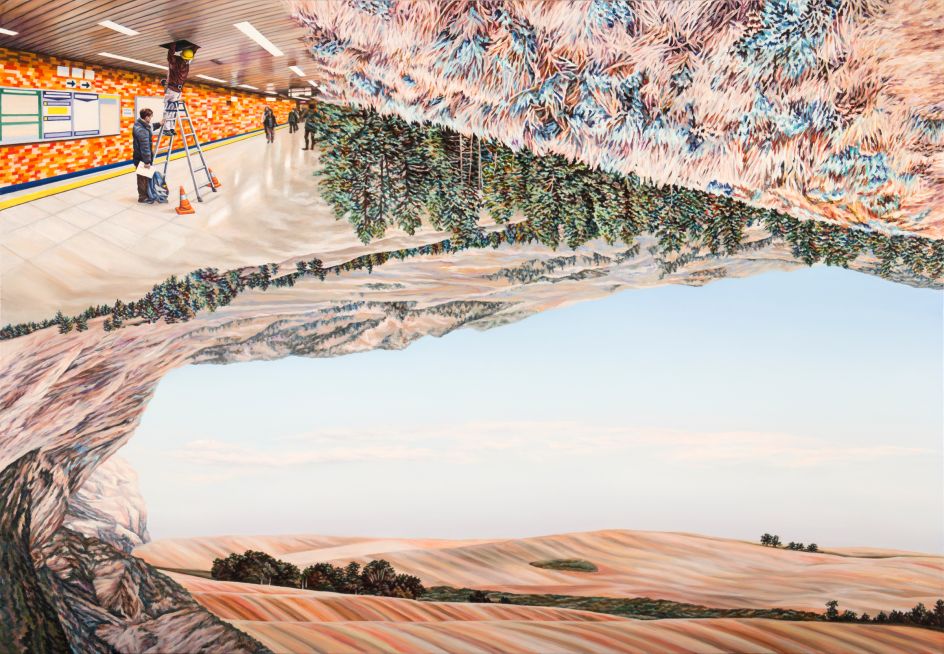
© Kevin Chin
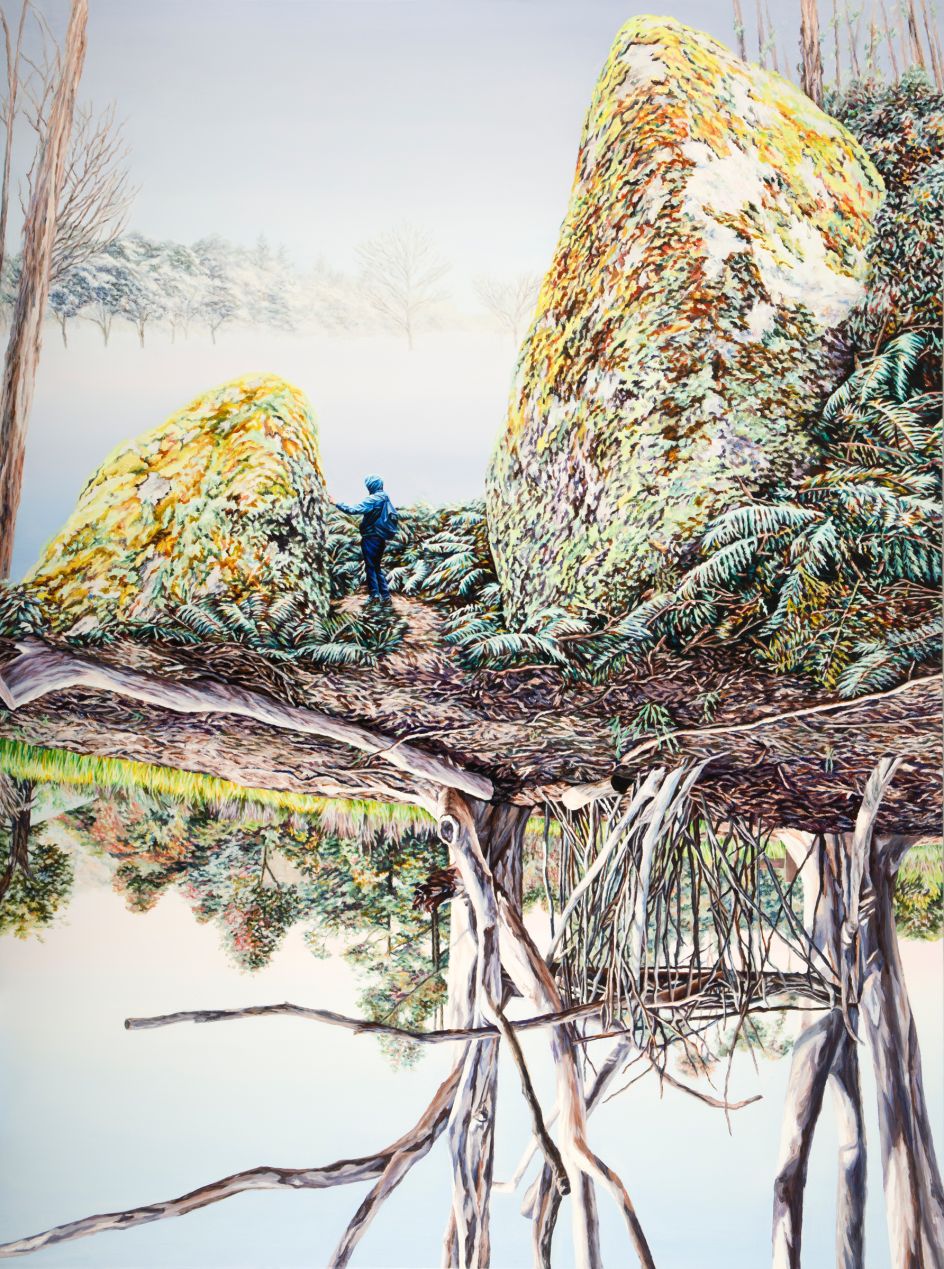
© Kevin Chin
Talk us through your meticulous painting technique. It sounds very interesting!
Before I paint anything, I make collages out of photos I've taken from my travels. I let the pictorial elements guide me through their own internal logic – for example, the way clothes hang on a line from one image might reference the waves of a mountain-scape from another image, so I'll bring them together into the same composition to create a conversation between inside/ outside and domestic/ wild.
The collage then forms a loose starting point for the painting. While I'm interested in constantly pushing the limitations of figurative painting, the actual painting process is very old-school. I work up the image through a series of translucent glazes. Since I'm bringing together so many disparate elements into a single composition, it's a way for me to feel my way through the image, constantly balancing and reassessing. This building up of layers also creates the richness we associate with oil painting.
I only use single-pigment paint and mix all the colours myself. That's because I'm so pedantic about controlling the colour. One section of the painting might have a very specific palette – with another section totally different – to clarify the separation between these lands. Likewise, I might introduce the same pigment into different sections of the painting to create direct visual relationships between contrasting subjects. In some paintings, I'm so meticulous that I write down what pigments I've used in each layer to keep track of what's where.
What themes do you explore in your art, and how do you achieve this?
By assembling fragments from distant lands, I'm exploring new ways of piecing together our place in the world. My paintings explore this contemporary condition of perpetually feeling in-between places. They're a testament to the mixed cultural traces we each inhabit, through our memories, our experiences, our ancestry, or even just our interests: both individually and through our collective consciousness.
The paintings are large-scale, so they are immediately atmospheric and draw you into what initially seems like an almost believable scene. Only when you look closer do you notice things askew, some parts even upside down, and then the paintings take on a more dreamy aspect. I plant meticulous details that you'll only notice if you keep looking closely, that keep your eye wandering around. These then become like little vignettes of other worlds. Each painting is like a journey that reflects how we meander to find our way.
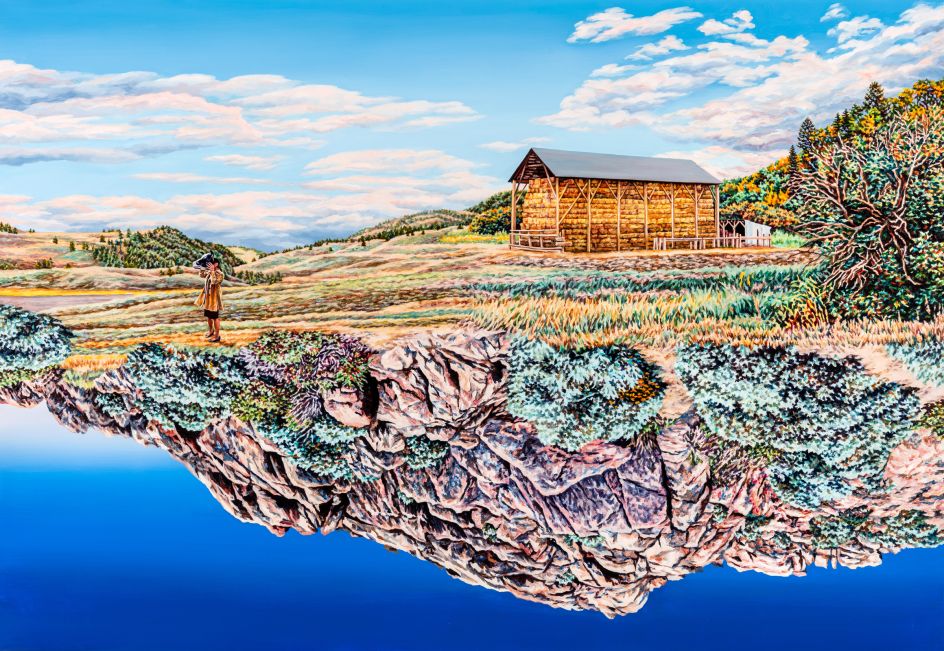
© Kevin Chin
Your most recent exhibition featured inverted landscapes. What motivated this creative decision?
I think we all feel that the world has been a little upside down these past few years! It's another way of me expressing a sentiment that I think is widely felt in the present day – feeling a little lost and the need to constantly piece things together for them to make any sense.
I'm also largely influenced by contemporary magic realist literature and authors like Haruki Murakami. This poetic way of creating worlds that resemble our own but are slightly awry – and using this to step outside ourselves and re-examine the way things are. This genre also emphasises the voices of minority groups, so inverting landscapes also provides a different perspective to question dominant narratives and the societal structures we take as given.
Your website describes your work as 'gently disorienting'. Tell us more about your style and how you've settled on it.
One of the first questions I commonly get asked about any painting is, 'Where is this?' One part of the painting might suggest a certain part of the world, whereas another might have strong cultural references from elsewhere. I intentionally bring these conflicting elements together to allude to the complex way we piece together our understanding of where we are in consciousness. Then I'll also throw in elements that are quite changed from the original source image, often regarding colour – as well as sections that are just pure paintwork that make direct reference to the constructed nature of the image. So ultimately, these are places that only truly exist in the imagination.
In addition to the mixed-up compositions, one of the things that make my paintings easily recognisable is the use of colour. It's based on years of experimentation, combining pigments you wouldn't expect. The technique is almost pointillist; when you look up close, you'll see surprising colour juxtapositions that form a cohesive image from afar. It's this particular approach to laying down colour that gives the paintings their shimmering effect when you see them in person.
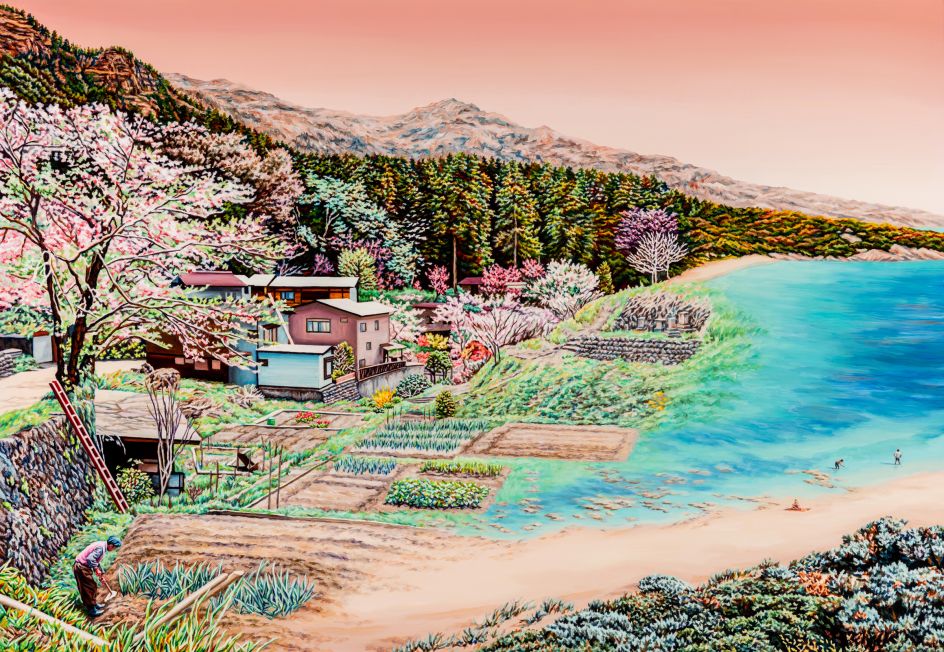
© Kevin Chin
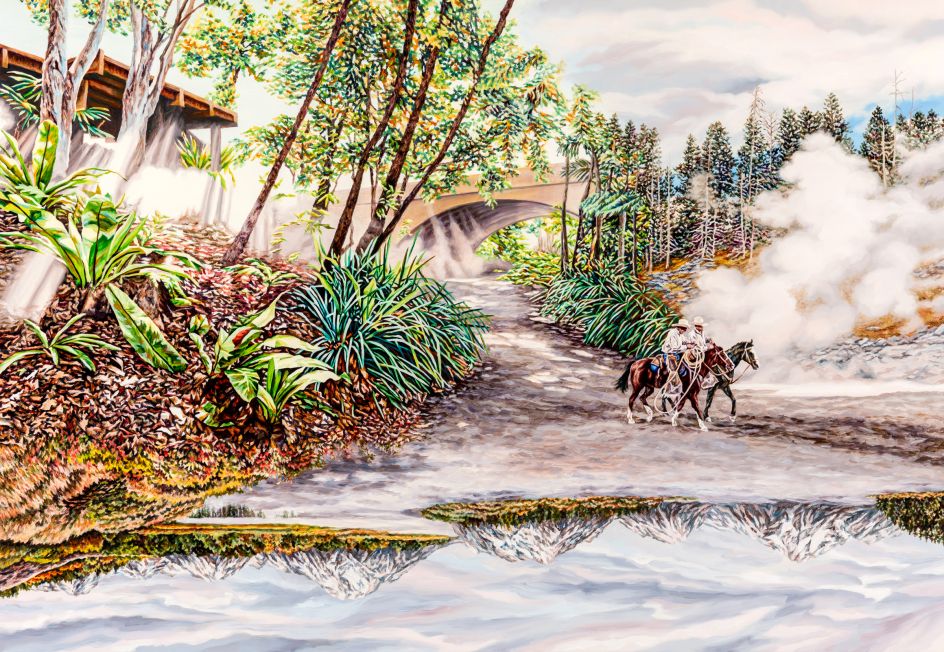
© Kevin Chin
How long do your paintings take to create, and what's the benefit of working slowly and taking your time?
Each painting takes me 2 to 3 months for just the painting process. But composing them takes even longer – I'm constantly reworking collages in the background as the source images for new paintings. Many collages will go through over 50 iterations before I've decided it's worthy of painting – then, of course, they'll change quite a lot during the actual painting process. In my last exhibition, there were paintings based on collages that I'd reworked over eight years!
There are a few reasons why the painting process itself takes me so long. For a start, they're massive! (about two metres wide, or even larger multi-panels) Then to create these kinds of atmospheric, rich, iridescent paintings, they must be built up in layers of glazes. This slow way of working up the painting then allows me to find the image as I'm going since there are so many different elements coming together in one canvas plane. It becomes a conversation with the painting, as it tells me what it needs – as much about looking and listening as applying paint. Also, I'm very conscious of the energy I bring to the work. This slow-working method lends the finished paintings a calming, meditative quality.
What are you working on now, and what are you looking forward to achieving in 2023?
My next solo exhibition will be with Martin Browne Contemporary in Sydney, but since my process is so slow, that won't be till 2024! I'll be in various prize and group exhibitions throughout 2023.
I'm also looking forward to a research trip to Italy later this year to explore how architecture can meld with the natural landscape (like the cliff sides of Cinque Terre) and how historical and present-day artefacts can coincide, to speak of fluid notions of time, as well as space.
In the meantime, I always love connecting with people from all over the world, through my website and on Instagram.

© Kevin Chin




 by Tüpokompanii](https://www.creativeboom.com/upload/articles/58/58684538770fb5b428dc1882f7a732f153500153_732.jpg)


 using <a href="https://www.ohnotype.co/fonts/obviously" target="_blank">Obviously</a> by Oh No Type Co., Art Director, Brand & Creative—Spotify](https://www.creativeboom.com/upload/articles/6e/6ed31eddc26fa563f213fc76d6993dab9231ffe4_732.jpg)








